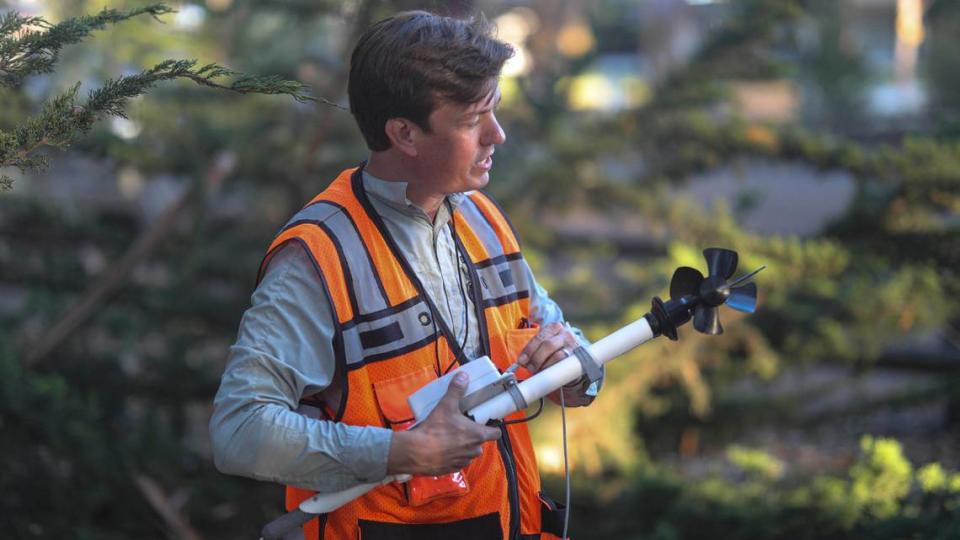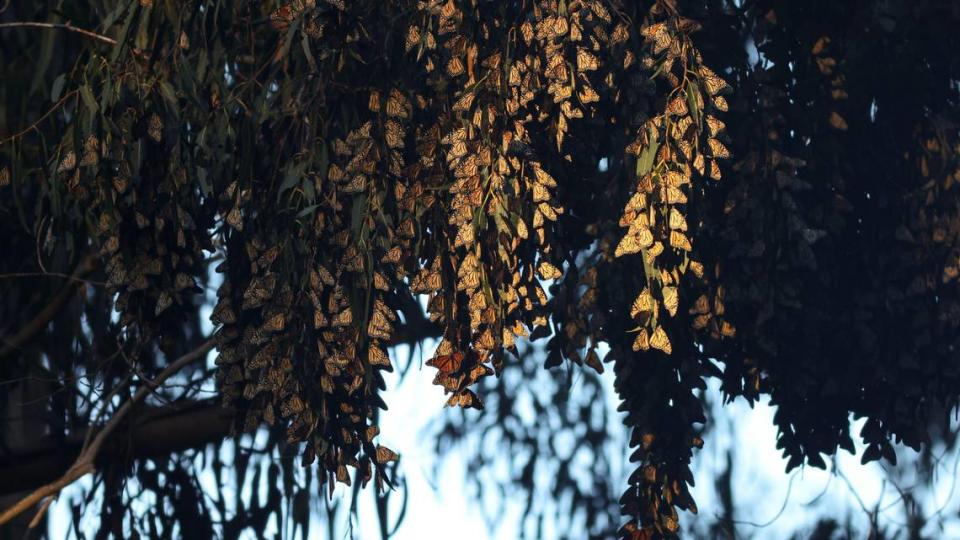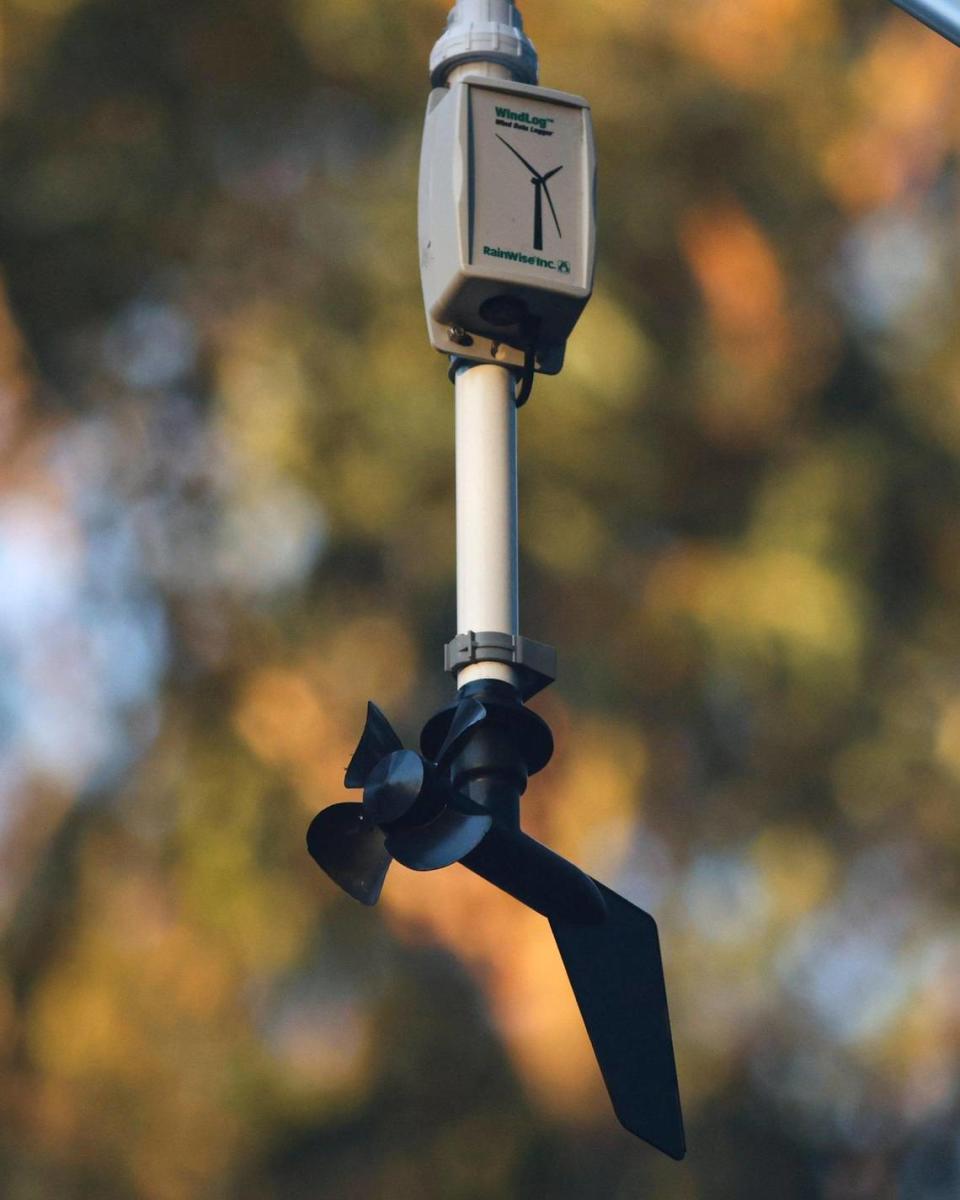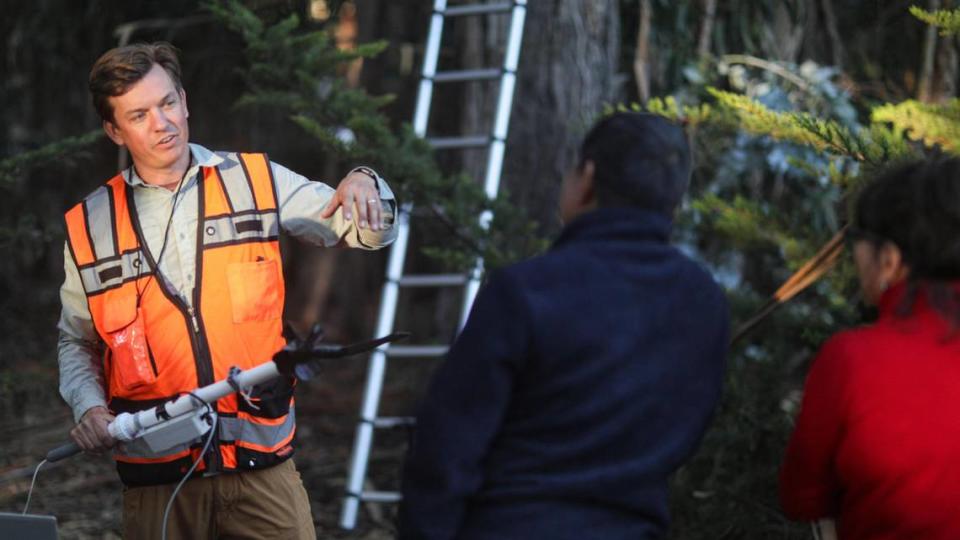How wind study at Pismo Beach butterfly grove could help save monarchs from extinction
If you’ve been to the Pismo Beach monarch butterfly grove recently, you’ve probably noticed several devices hanging from long poles in the towering eucalyptus trees.
The devices are anemometers, measuring wind speed and direction throughout the grove.
Kyle Nessen, a Cal Poly biology graduate student and program manager at environmental consultant company Althouse and Meade, hung the devices in mid-October.
“We think wind protection is really important for the monarchs overwintering in groves like this,” he explained. “This study will help determine how this forest’s structure contributes to the survival of the monarchs.”

Migrating butterflies considered teetering on edge of extinction
Migratory western monarch butterflies fly each fall to certain groves of trees along California’s coast to overwinter. During overwintering season, the butterflies mostly stay put to conserve energy before dispersing in the spring to breed.
In the late 1990s, scientists counted more than 1.2 million migratory butterflies in overwintering groves throughout California.
But the species has since seen dramatic population declines.
In 2020, fewer than 3,000 of the monarchs were counted in California. At the time, scientists were devastated, worrying that the important pollinator species was on the brink of extinction.
Recent annual counts of the overwintering butterflies have seen improvements — about 335,000 were counted in California in 2022 — but remain far below the pre-2000s numbers.
This year, volunteers with the Xerces Society of Invertebrate Conservation’s annual Thanksgiving count have tallied more than 100,000 overwintering monarchs in California, with roughly 16,000 of those counted at the Pismo Beach grove. More data is expected to come in over the next few weeks.

Butterflies threatened by dwindling overwintering habitat
The monarch butterfly is slated to be listed under the federal Endangered Species Act in 2024, according to the California Department of Fish and Wildlife, which categorizes the insect as a “species of greatest conservation need.”
One of the greatest threats to the migratory monarch butterflies’ survival is the destruction of their overwintering habitats. Other threats include climate change and pesticide use.
Monarch butterflies, a species native to California, seem to prefer to overwinter in the non-native groves of eucalyptus trees that have invaded California’s coast thanks to human plantings. As a result, their overwintering homes — vital to the butterflies’ survival through the cold winters — are prone to getting cut down.
Study to examine how trees impact wind speeds through grove
But while it’s clear the monarch butterflies prefer the eucalyptus groves and sometimes are found in groves of Monterey pine trees or other groves with tall trees, scientists know little about why the migratory western monarchs are so keen on particular groves.
“Monarchs, for [being] so well known and also so at risk, they are just honestly understudied,” said Emma Pelton, a senior conservation biologist at the Xerces Society. “We really need to better understand how forest structure impacts monarchs.”
Nessen’s study in the Pismo Beach grove aims to do just that.
With funding from the Xerces Society, U.S. Department of Defense Legacy Natural Resources Program and U.S. Forest Service International Programs along with help from California State Parks, Nessen placed the 11 anemometers high up in carefully selected eucalyptus trees at the Pismo Beach grove.

The devices measure the maximum and average wind speed every minute, giving Nessen a treasure trove of wind data never before collected at the grove.
Nessen said he plans to keep the wind monitors in the grove through March. After that, he’ll fly a drone equipped with LiDAR technology over the grove to create a 3-D model of the area.
Then, by examining the wind data gathered from the anemometers, Nessen expects to be able to see how wind moves through the grove.
Research could be ‘exciting’ tool for helping survival of species
A sister study Nessen is leading at Vandenberg Space Force Base aims to essentially figure out at what wind speeds monarch butterflies are disturbed. To save energy, scientists believe monarch butterflies only take flight from overwintering groves to cool down and when the wind tosses them from the trees.
Combined with State Parks’ extensive data at the Pismo Beach grove showing which trees the butterflies are roosting in, the studies could help guide the management and protection of overwintering groves.

The study “should give us a really good picture of how these trees are creating wind protection and where we can improve it,” Nessen said.
It’s exciting research on western monarch butterflies that has never been done at this scale before, Pelton said.
“We need to generate a bigger body of knowledge about how to better manage and protect these groves,” she said. “This study is really exciting because it’s so rare for [western overwintering] monarch research to be funded, and it’ll really help us figure out how we can do more in the future to conserve the species.”
Support Local Journalism
→ Help expand our reporting on SLO County by donating to The Tribune’s Local Impact Journalism Fund. Go to sanluisobispo.com/donate.

